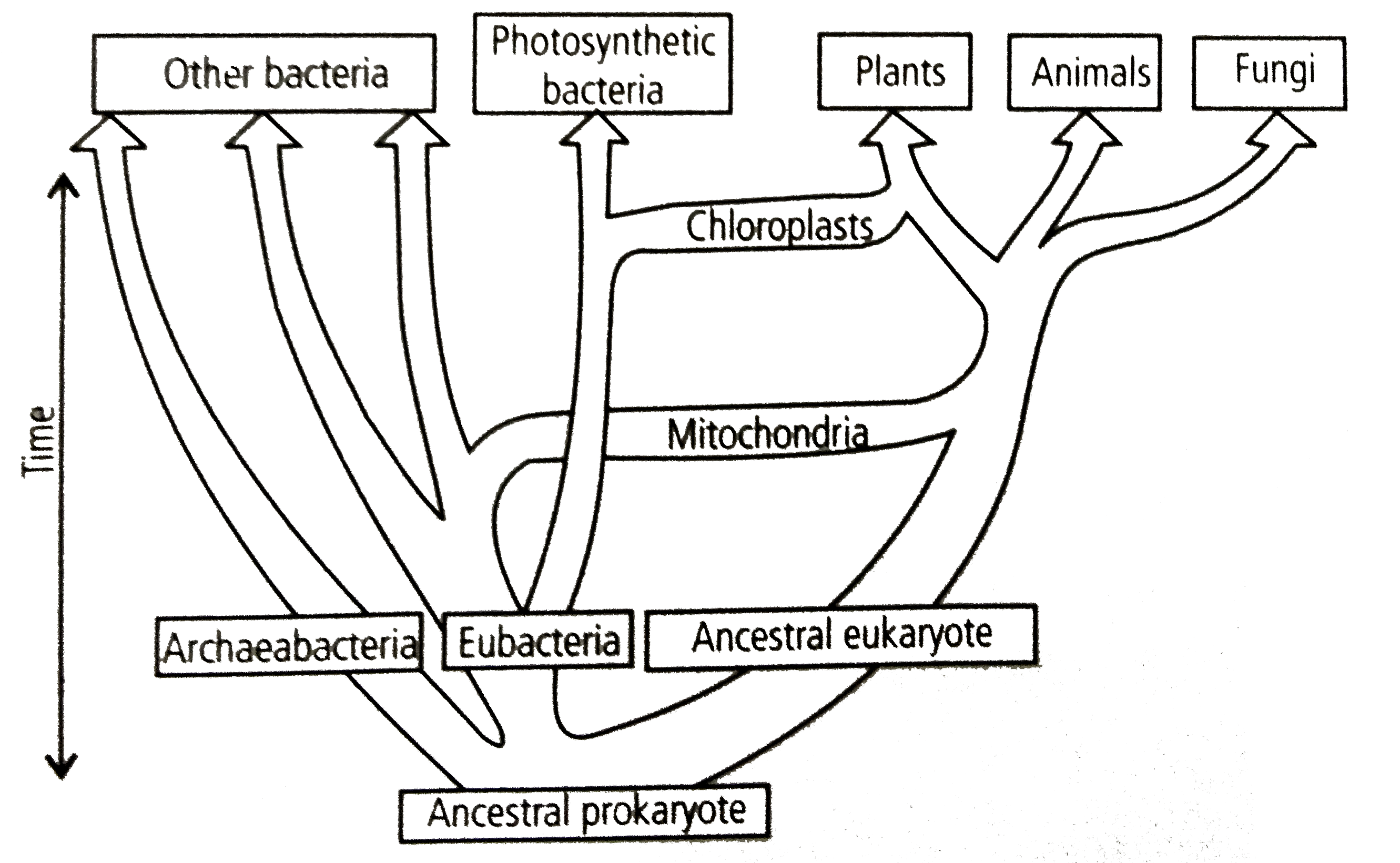The matrix of both chloroplast and mitochondria are similar in having
Circular DNA
70s ribosomes
RNA
All
The correct Answer is:D
To answer the question regarding the similarities in the matrix of both chloroplasts and mitochondria, we can follow these steps:
1. Understanding the Organelles:
- Chloroplasts are found in plant cells and are responsible for photosynthesis.
- Mitochondria are present in both plant and animal cells and are known as the powerhouse of the cell, producing energy through respiration.
2. Identifying the Matrix:
- The matrix refers to the inner space of these organelles where various biochemical processes occur.
3. Comparing the Components:
- Both chloroplasts and mitochondria have their own DNA, which is circular in structure, similar to prokaryotic DNA.
- They both contain 70S ribosomes, which are smaller than the 80S ribosomes found in the cytoplasm of eukaryotic cells.
- Both organelles also have RNA, which is essential for protein synthesis.
4. Evaluating the Options:
- Option A: Circular DNA - Present in both chloroplasts and mitochondria.
- Option B: 70S Ribosomes - Present in both organelles.
- Option C: RNA - Present in both chloroplasts and mitochondria.
- Since all options are correct, the answer is Option D: All of the above.
Final Answer:
The matrix of both chloroplasts and mitochondria are similar in having circular DNA, 70S ribosomes, and RNA. Therefore, the correct answer is Option D: All.
- Chloroplasts are found in plant cells and are responsible for photosynthesis.
- Mitochondria are present in both plant and animal cells and are known as the powerhouse of the cell, producing energy through respiration.
- The matrix refers to the inner space of these organelles where various biochemical processes occur.
- Both chloroplasts and mitochondria have their own DNA, which is circular in structure, similar to prokaryotic DNA.
- They both contain 70S ribosomes, which are smaller than the 80S ribosomes found in the cytoplasm of eukaryotic cells.
- Both organelles also have RNA, which is essential for protein synthesis.
- Option A: Circular DNA - Present in both chloroplasts and mitochondria.
- Option B: 70S Ribosomes - Present in both organelles.
- Option C: RNA - Present in both chloroplasts and mitochondria.
- Since all options are correct, the answer is Option D: All of the above.
The matrix of both chloroplasts and mitochondria are similar in having circular DNA, 70S ribosomes, and RNA. Therefore, the correct answer is Option D: All.
Topper's Solved these Questions
- BOOK - AAKASH SERIESCHAPTER - THE UNIT OF LIFE EXERCISE - EXERCISE - I (Ribosomes )18videos
THE UNIT OF LIFE
- BOOK - AAKASH SERIESCHAPTER - THE UNIT OF LIFE EXERCISE - EXERCISE - I (Microbodies )5videos
THE UNIT OF LIFE
- BOOK - AAKASH SERIESCHAPTER - THE UNIT OF LIFE EXERCISE - EXERCISE - I (Plastids )21videos
THE UNIT OF LIFE
- BOOK - AAKASH SERIESCHAPTER - THE LIVING WORLD EXERCISE - EXERCISE-III (Previous AIPMT/NEET Questions)12videos
THE LIVING WORLD
Similar Questions
Knowledge Check
- Question 1 - Select One
Given diagram illustrates an evolutionary tree.

Which of the following statements can be deduced from the given evolutionary tree?
(i) The ancestral eukaryotes were anaerobic.
(ii) All eukaryotes were anaerobic.
(ii) All eukaryotes possess mitochondria.
(iii) Eubacteria and Eukaryota have a common ancestor whereas Archebacteria have a unique and independent origin.
(iv) Mitochondria and chloroplasts have similar genomes.
(v) Mitochondria are presents in plants, animals and fungi.
(vi) chloroplasts and mitochondria arose asendosymbionts.
(vii) Fungi and animals lost chloroplasts during evolution.Aiii,v and viBi,v and viCii,iii,iv and vDi,v,vi and vii
Common organic acids found in both Chloroplast and mitochondria in C4 plants are
View SolutionRead the given statements and select the correct option.
Statement 1 : Chloroplast and mitochondria are semiautonomous bondies.
Statement 2 : Chloroplast and mitochondria have their own DNA and protein synthesising machinery.View SolutionChemiosmotic theory of ATP synthesis in the chloroplasts and mitochondria is based on
(a) Proton gradient
(b) Accumulation of K+ ions
(c) Accumulation of Na+ ions
(d) Membrane potentialView SolutionWhich similarity is found between chloroplast and mitochondria ?
View SolutionThe chemiosmotic theory of ATP synthesis in the chloroplast and mitochondria is based on
View Solution[A] : The mechanism of ATP formation in mito- chondria is almost similar to that of chloro plast.
[R]: In mitochondria there is proton gradient formation inside intermembrane space whereas in chloroplast proton gradient is formed in thylakoid lumen.View SolutionThe common feature amongst nucleus, chloroplast and mitochondria is
View Solution

